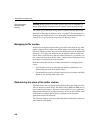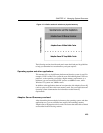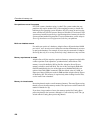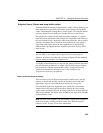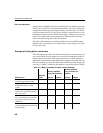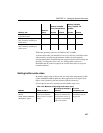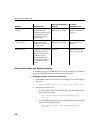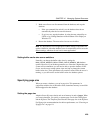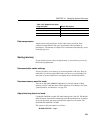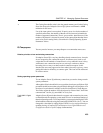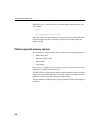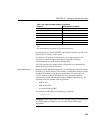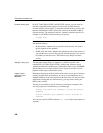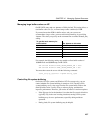
Overview of memory use
430
Because the Catalog Store accounts for only a tiny fraction of I/O, the page size
for the Catalog Store has no real impact on performance. The default value of
4096 bytes should be adequate.
The IQ page size determines two other performance factors, the default I/O
transfer block size, and the maximum data compression for your database.
These factors are discussed in the sections that follow.
Block size
All I/O occurs in units of blocks. The size of these blocks is set when you
create an IQ database; you cannot change it without recreating the database. By
default, the IQ page size determines the I/O transfer block size. For example,
the default IQ page size of 64KB results in a default block size of 4096 bytes.
In general, IQ uses this ratio of default block size to page size, but it considers
other factors also.
The default block size should result in an optimal balance of I/O transfer rate
and disk space usage for most systems. It does favor saving space over
performance, however. If the default block size does not work well for you, you
can set it to any power of two between 4096 and 32,768, subject to the
constraints that there can be no fewer than two and no more than 16 blocks in
a page. You may want to set the block size explicitly in certain cases:
• For a raw disk installation that uses a disk array, larger blocks may give
better performance at the expense of disk space.
• For a file system installation, to optimize performance over disk space, the
IQ block size should be greater than or equal to the operating system's
native block size, if there is one. You may get better I/O rates if your IQ
block size matches your file system’s block size.
Table 12-3 shows the default block size for each IQ page size.



